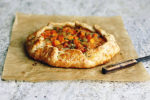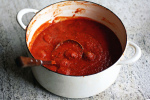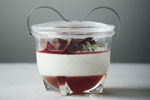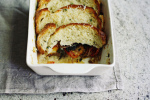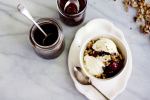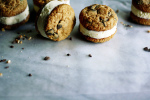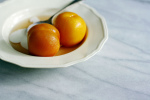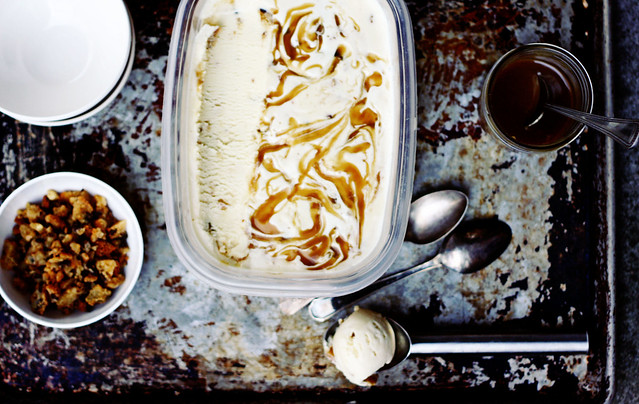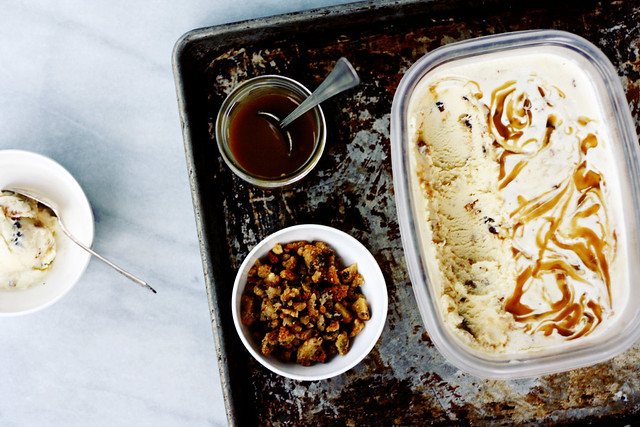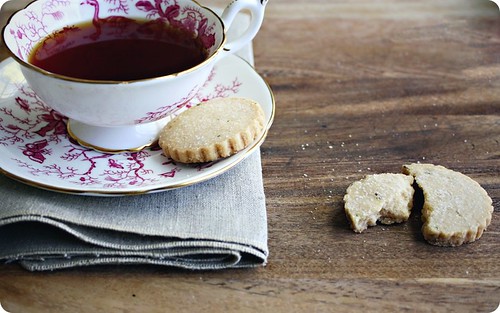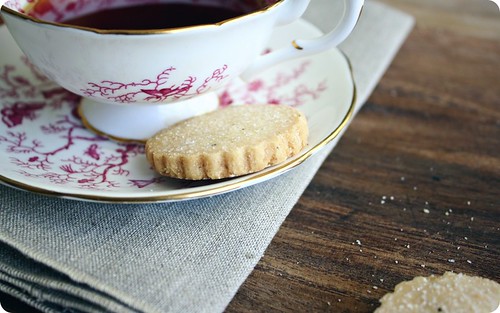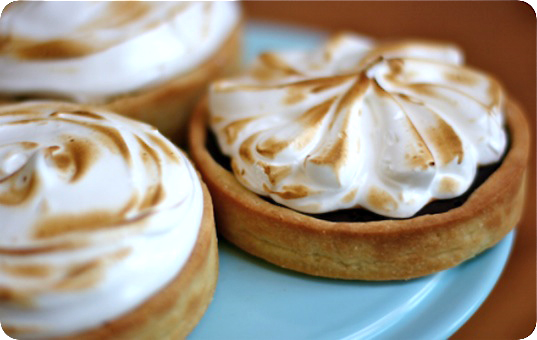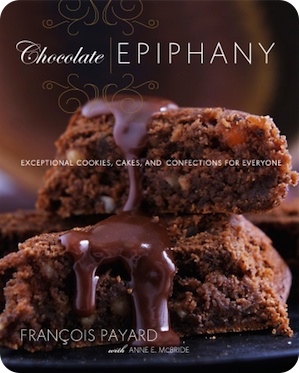Something we can work with
 Tuesday, February 21, 2012 at 10:21AM
Tuesday, February 21, 2012 at 10:21AM If Béa's dessert was a paragon of restraint, exquisitely delicate, this brash incarnation of much the same ingredients is its antithesis.
And, comically, the story of this cookie-studded, caramel-rippled ice cream began in stubborn frugality.
On the same day that friends were introducing us to Sweetheart Sundaes, on this end we were making blondies (think brownies without the cocoa). Our bars were heavy with shards of semisweet chocolate, and a measured scattering of white; they baked up shatteringly glossy at their top and dense with chew at their centre. Following the theme of St. Valentine, my lads and I cut the slab into appropriate heart shapes, to wrap and give to fond friends.
Our affection was well represented.
However, no matter how neatly, carefully, mindfully hearts are punched out of a rectangle, there will be scraps left over. In the manufacture of multiple trays of blondies, those scraps can pile up staggeringly quick. There's only so many that can be nibbled while you work, and as a result it became necessary to consider a suitable use for all those irregular bits.
Thank goodness for ice cream.
With a faithful affection for frosty confections, I keep the pantry stocked with all that's needed to facilitate the most direct route to frozen happiness that I know — condensed milk ice cream.
It's pour-and-heat and you're ready to go, with only the wait to chill and freeze to contend with. We could have stopped there, stirring in those leftover chunks, arriving at a rocky-with-cookies n' cream conclusion. But, I decided the coming long weekend deserved fanfare of its own, and so espresso-kicked caramel would serve as epilogue to this tale.
Caramel, straight up, can be a tricky business. Even in this energetic application of excess, I thought that too much caramel would be rather too much. It's a modest amount we made, but what's more is there's a sharpness to that sweet, thanks to espresso. The toasty, roasted, tannic depth of coffee cleaves the thick richness of the caramel, taming the throaty burn that caramel can often bring; the combination ends up in between affogato and the nicest butterscotch candy and my-good-gravy-this-is-good — that is to say, it's something we can work with.
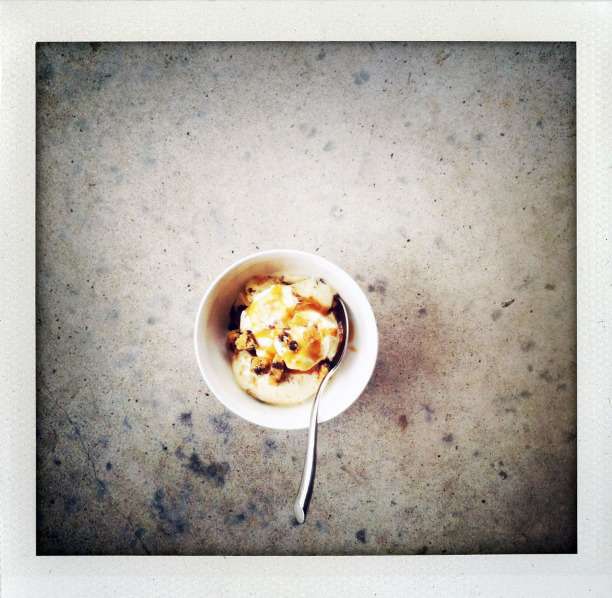
The image above was taken with my phone. In the immediacy of a dead camera battery, hot caramel, melting cream and what we'll now call smug frugality, you work with what's nearby, what's on hand.
Here's to that working out just fine.
Crumbled cookie ice cream with espresso caramel
The condensed milk ice cream is an old favourite of mine, and its cooked sweetness works as a subtle underscore to the caramel ripple.
Ingredients
1 14-ounce can sweetened condensed milk
1 14-ounce can evaporated milk
1 fresh vanilla bean
Kosher salt
1 3/4 cups heavy cream, divided
1/2 cup brown sugar, packed
2 tablespoons butter
2 tablespoons honey
1/4-1/2 teaspoon finely ground espresso beans or espresso powder, depending on taste
1/2 teaspoon vanilla extract
1 cup roughly crushed cookies, see note
In a medium saucepan, combine the condensed milk and evaporated milk. Spilt the vanilla bean down its length, scraping out the seeds. Add both the seeds and the bean to the saucepan, along with a good pinch of salt. Heat over medium-low heat until just under a simmer, stirring often.
Pour the mixture, along with the vanilla bean, into a clean bowl or pitcher. Stir in 1 1/2 cups of the heavy cream. Chill for a few hours or overnight.
Meanwhile, make the caramel. In a heavy-bottomed saucepan over medium-high heat the brown sugar, honey, butter and a pinch of salt, stirring until the butter is melted. Pour in 1/4 cup of heavy cream, along with the ground espresso beans. Bring to a boil, whisking until smooth and the sugar is dissolved. Reduce the heat to low and continue to boil, undisturbed, for 1 minute longer. Remove from the heat, stir in the vanilla. Set aside to cool, stirring occasionally.
Strain the milk mixture in an ice cream maker and freeze according to manufacturer's direction. Depending on the capacity of your machine, either add the crushed cookies a handful at a time to the machine during the last few minutes of churning (the mixture should be the consistency of soft serve), or once the freezing cycle is finished, remove the ice cream to a large, chilled bowl and fold in the cookies by hand.
Spoon 1/3 of the ice cream into a storage container. Smooth the top, and pour over a few tablespoons of caramel in long stripes. With the tip of a knife, lightly swirl the caramel into the ice cream. Layer in half of the remaining ice cream, and repeat the layers two more times, ending with a drizzle of caramel. There will be caramel left over. Set this aside.
Cover the ice cream and freeze for at least 3 hours. To serve, warm up the remaining caramel, along with any leftover cookies, or some chopped, toasted walnuts if you happen to have them around. Make sundaes, and try to keep from grinning.
Makes about 1 quart.
Note:
- Blondies were the cookie of choice because we had them on hand. They had a balance of crunch and soft that gave a terrific texture; chocolate chip cookies, or oatmeal cookies are what I'd recommend for their similarity. If you're hard pressed though, there's little wrong with bashed up vanilla wafers.


